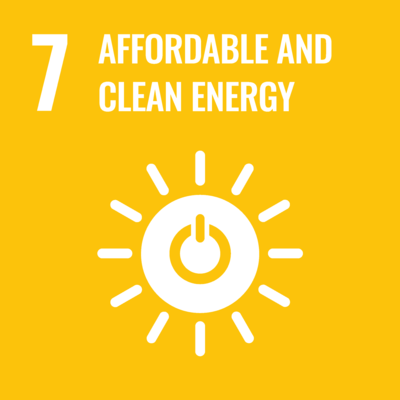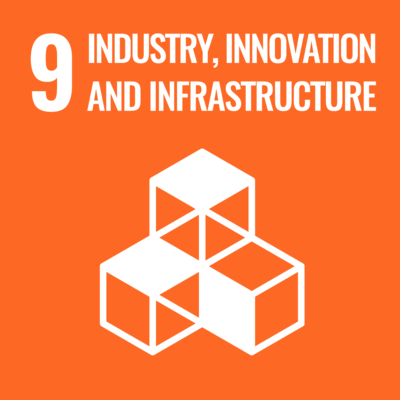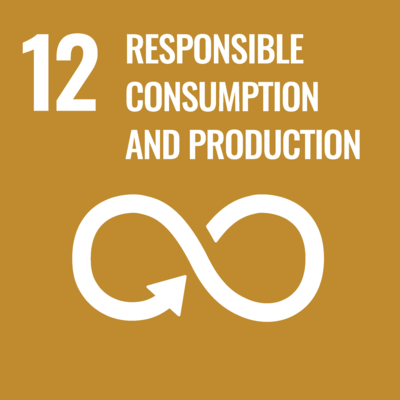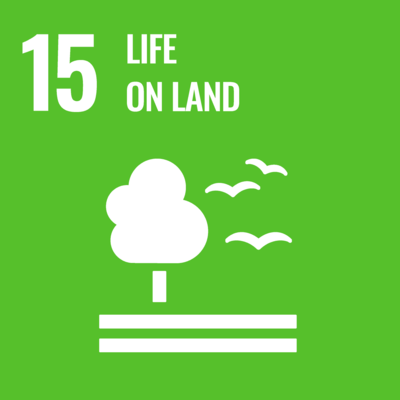SDG 13.3.4 Inform and support government
1. NCUE’s faculty members actively participate in various research and practical projects, addressing the challenges brought by global warming, providing concrete suggestions, and supporting relevant planning and management for local or regional governments. As shown in Table 1, Professor Jien-yi Tu conducted in-depth research on the “Impacts of Large-scale Circulation Changes on Precipitation in the Asian Monsoon Region under Global Warming”, providing scientific basis for future climate adaptation and water resource management.
Furthermore, the USR project "Ecological Homelands and Urban-Rural Sustainability" by our Department of Arts proposed plans for combating the ecological crisis in the Changhua area. In cooperation with the city government, the project successfully improved the biodiversity of the Xiangshan Trail Oriental Park, contributing to the promotion of local ecological sustainable development.
Concurrently, Professor Chuian-fu Ken from our university has been promoting the "Beautiful and Treasured Clams in Fangyuan and Dacheng: Sustainable Industry and Environment Project of Changhua’s Two Cities Amid Climate Change" project. This initiative assisted local governments in facing climate change challenges, encompassing environmental education, raising air pollution awareness, wetland conservation, and more. Through interdisciplinary collaboration and the promotion of green energy technologies, the project fostered sustainable development of local industries and the environment, supporting local government efforts in climate change risk management.
Table 1. Serial No., Principal Investigator, and Project Title
|
No. |
Project leader |
Project name |
|
1 |
Professor Jien-yi Tu |
Impacts of Large-scale Circulation Changes on Precipitation in the Asian Monsoon Region under Global Warming (Appendix 13.3.2A-Report of Outcomes) |
|
2 |
Associate Professor Man-ping Wang |
University Social Responsibility Implementation Project: “Ecological Homelands and Urban-Rural Sustainability:A Changhua Ecological Art Project” |
|
3 |
Professor Chuian-fu Ken |
“Beautiful and Treasured Clams in Fangyuan and Dacheng: Sustainable Industry and Environment Project of Changhua’s Two Cities Amid Climate Change" project |
Details of the project are provided below:
(1) Prof. Jien-yi Tu/ National Science and Technology Council (NSTC) Project/ Impacts of Large-scale Circulation Changes on Precipitation in the Asian Monsoon Region under Global Warming. This study primarily investigates the seasonal, interannual, and long-term trends of rainfall in the Asian monsoon region. Results indicate that strong monsoon years are typically accompanied by low-level air convergence, with large amounts of moisture transported into the monsoon region, leading to increased precipitation. Weak monsoon years are characterized by air divergence, with high-pressure anomalies providing more stable atmospheric conditions, resulting in reduced rainfall. From a seasonal variation perspective, the “dry seasons get drier, wet seasons get wetter” pattern of seasonal rainfall changes is mainly observed in the East Asian monsoon region. The South Asian and Northwest Pacific monsoon regions show an increasing trend in dry season rainfall, with sea surface temperature changes and associated atmospheric circulation playing crucial roles. The research findings help us better understand the potential impacts of monsoon circulation changes on precipitation in monsoon regions, which is beneficial for Taiwan's future disaster prevention and water resource allocation. (Figures 1-4)
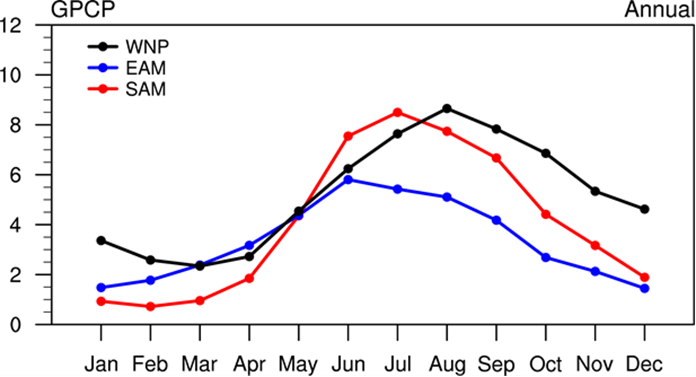
Figure1: Annual cycle of rainfall in three Asian monsoon subsystem regions. Red, blue, and black represent rainfall in the South Asian, East Asian, and Northwest Pacific monsoon regions, respectively.
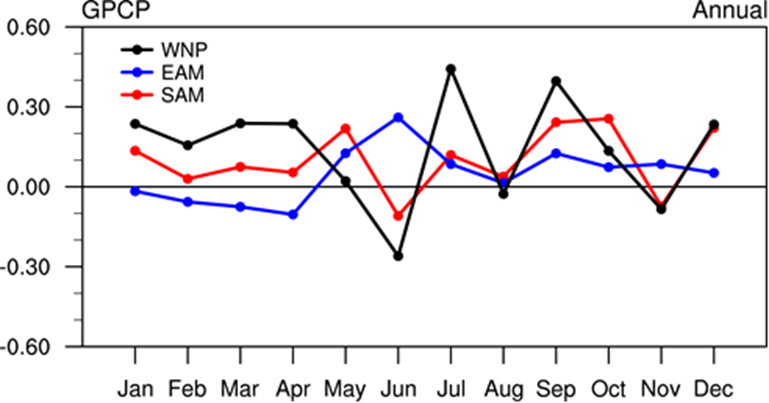
Figure2: Annual cycle of monthly precipitation trends in the three monsoon sub-regions.
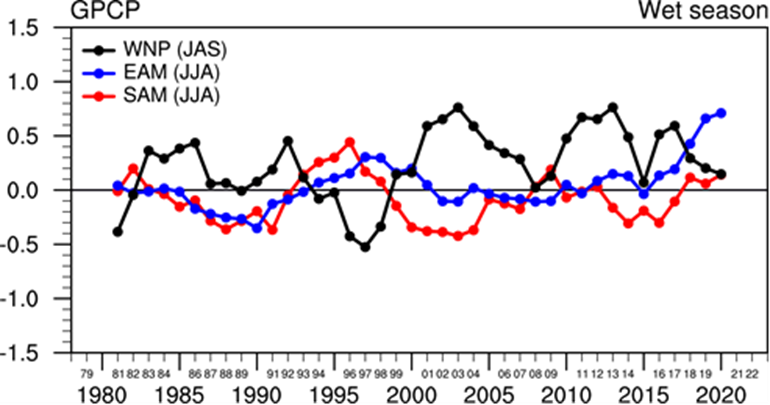
Figure 3: Five-year moving average time series of wet season (upper panel) precipitation in the three monsoon sub-regions.
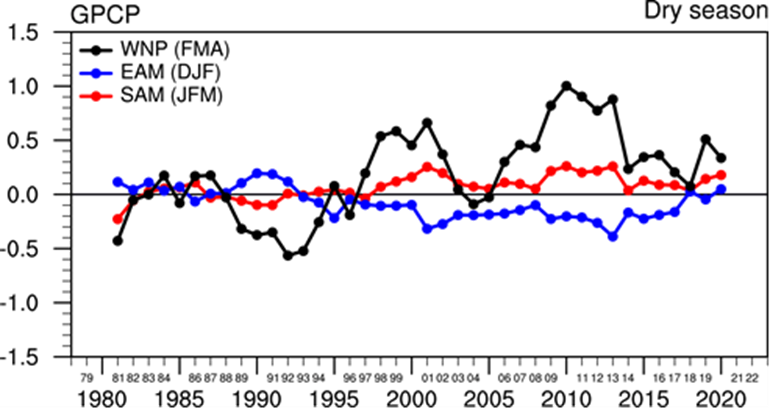
Figure 4: Five-year moving average time series of dry season (lower panel) precipitation in the three monsoon sub-regions.
(2) In response to the ecological crisis caused by global warming, NCUE launched the USR project “Ecological Homelands and Urban-Rural Sustainability: A Changhua Ecological Art Project” through the Department of Arts in 2023. With local care as the primary focus, this initiative aims to achieve the United Nations SDG Goal 13: "Climate Action". In collaboration with the Changhua City Office, we implemented an ecological assessment and improvement plan for the Xiangshan Trail Oriental Park.
Through the ecological evaluation conducted by Dr. Shih-feng Fu , Director of the Department of Biology, and members of the USR project team, it was recommended that Fagaceae plants should be introduced to the park. This measure would facilitate the natural ecological succession of low-altitude secondary forests, thus maintaining the biodiversity of the primeval forest environment.
This recommendation was endorsed by the Mayor of Changhua City. Following the planting of numerous Fagaceae species, Mr. Zhi-min Zhang, the manager of Xiangshan Park, reported a notable increase in butterfly populations. This enhancement has created more favorable conditions for pollination-dependent plants, thereby promoting the development of biodiversity within the park. (Figures 5-6)
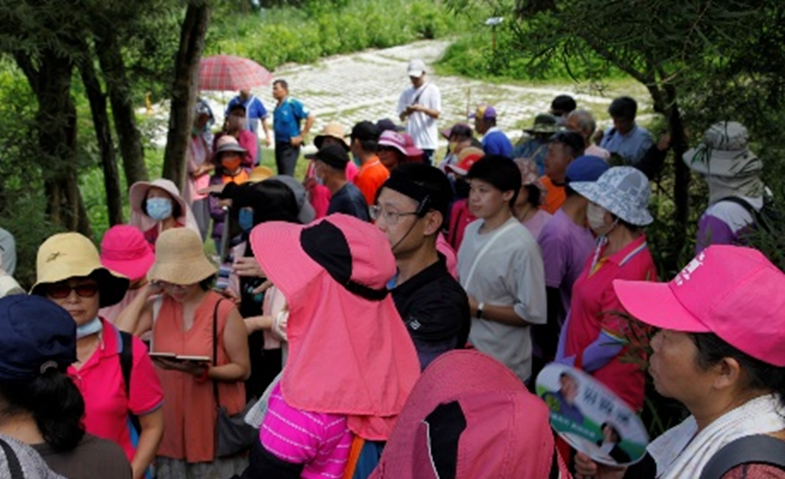
Figure 5: Tour the environment in the Xiangshan area

Figure 6: Interview with the Xiangshan Park manager
(3) The “Beautiful and Treasured Clams in Fangyuan and Dacheng: Sustainable Industry and Environment Project of Changhua’s Two Cities Amid Climate Change” project aims to assist local governments in addressing climate change-related risks. The university collaborates with the Changhua County Aquaculture and Fisheries Development Association to establish interdisciplinary environmental practical application courses, inviting professional instructors and university students to learn together. Through workshops, aquaculture practitioners are taught water quality monitoring and disease inspection techniques, promoting the application of probiotics and traceability systems, fostering green energy development and shell waste recycling, and advancing eco-friendly and intelligent aquaculture to enhance cultivation efficiency.
Moreover, addressing SDG 13, our university offers climate change environmental education certification courses, training seed teachers for 24/33/100 hours, combining community groups and educational research bases to promote environmental education. The project content covers environmental education, ecological protection, air pollution awareness, wetland conservation, energy conservation, and carbon reduction. By integrating practice and research, it assists local governments and industries in addressing challenges brought by climate change, promoting sustainable development of local industries and the environment.
Project activity Facebook fan page link: https://www.facebook.com/NCUEUSR/photos/?tab=album&ref=page_internal
2. Taiwan is located at the boundary of the ‘Eurasian Plate’ and the ‘Philippine Sea Plate’, so earthquakes are very frequent. According to data of the Seismological Center, Central Weather Administration, from 1991 to 2015, about 3,000 earthquakes occurred in Taiwan every month on average, and 102 major earthquake-related disasters occurred from 1901 to 2016. Although an accurate earthquake prediction technology is not available yet, increasing seismic observation data are rather helpful in improving the efficiency of disaster relief and reducing the loss of life and property during earthquakes. In cooperation with the Central Weather Administration, NCUE has installed strong motion observation apparatuses in the two campuses and in residential areas as well as the Baisha Weather station.
(1) Below are some more details about the seismic observation apparatuses (Figure 7-9).
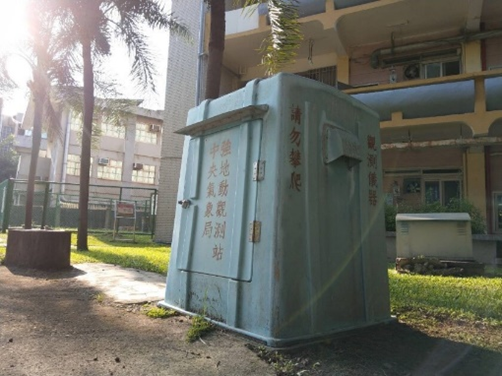
Figure 7. Strong motion observation station in Jinde Campus The observation station houses the strong motion observation apparatus. The time, location, and size of an earthquake can be calculated when many stations are connected to form a seismograph network.
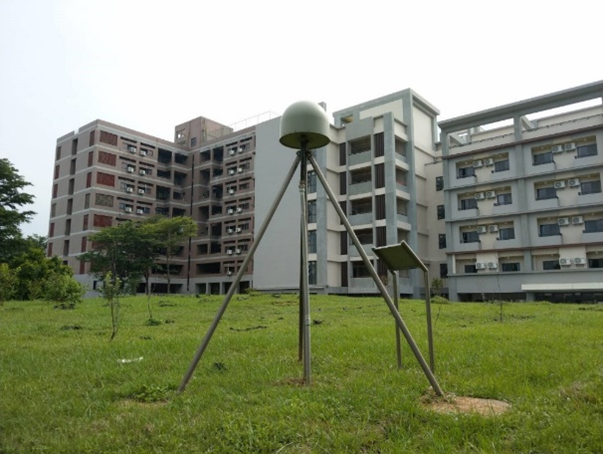
Figure 8: Crustal deformation observation station in Baoshan Campus. The station continuously receives signals emitted from the global satellite positioning system, and with the received signals at the same time by other stations, it can accurately calculate the station’s location relative to other stations. Long-term observation data could reflect significant surface displacement due to major earthquakes. Also, the data on small crustal deformation occurs during earthquakes are very helpful in understanding crustal movement and earthquake potential.
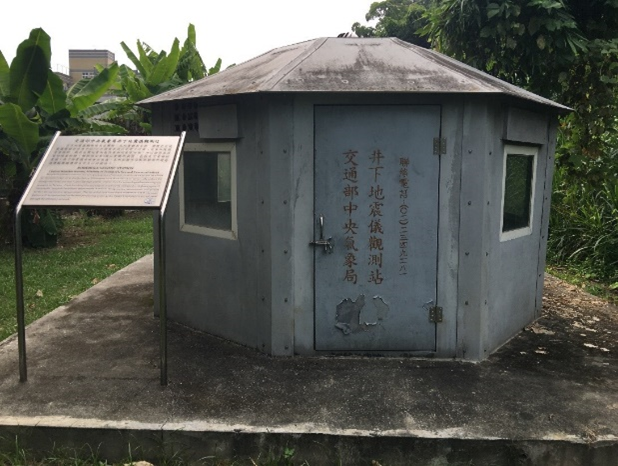
Figure 9: Underground seismograph observation station in residential areas. The seismograph installed at a depth of 300 meters in the well can significantly reduce the interference from surface noise and obtain high quality ground motion signals, improving the accuracy of seismic locating and the ability to monitor regional small-scale earthquakes.
(2) The Central Weather Administration works with academic institutions in Taiwan by installing weather facilities for teaching purposes. They can be used as practice areas by students. The automatic meteorological observation station run by NCUE’s Department of Geography is one of such facilities. It is also the only station in central Taiwan under the partnership. The automatic meteorological station was built on the attic of the Geography Department Building. It was commissioned in November 1997 and has run for 26 years by 2023(Figure 10). The meteorological instruments and peripheral devices are used for real-time observation, and meteorological data are synchronized with the Southern Region Weather Center of the Central Weather Administration. The real-time data are useful for disaster prevention units. The features of the observation station are shown in the photo below. In addition, sufficiently long observation time also means that the station could help people better understand the regional climate characteristics and changes and researchers conduct relevant studies.
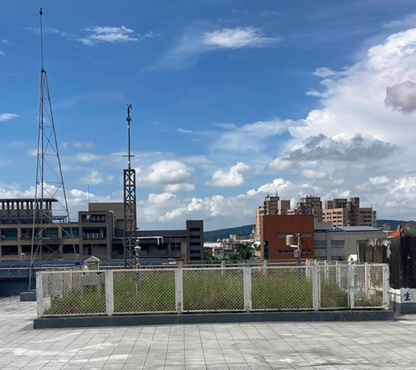
Figure 10: NCUE’s Baisha Weather Station







